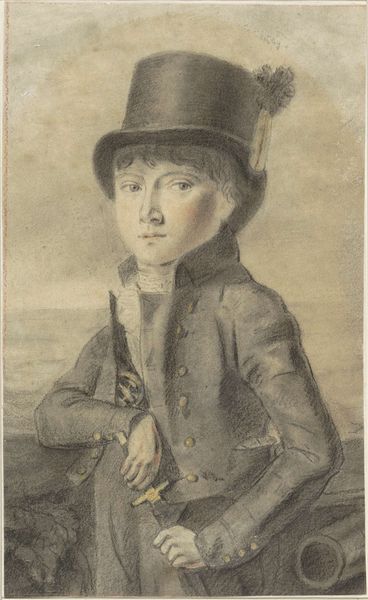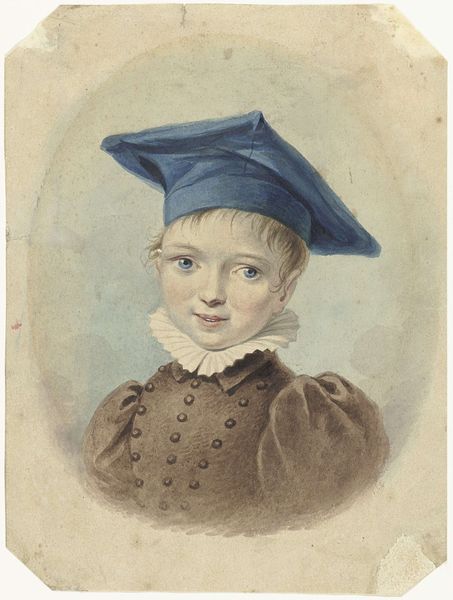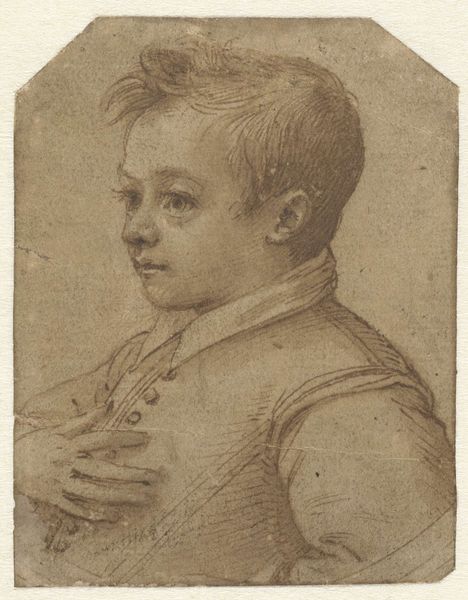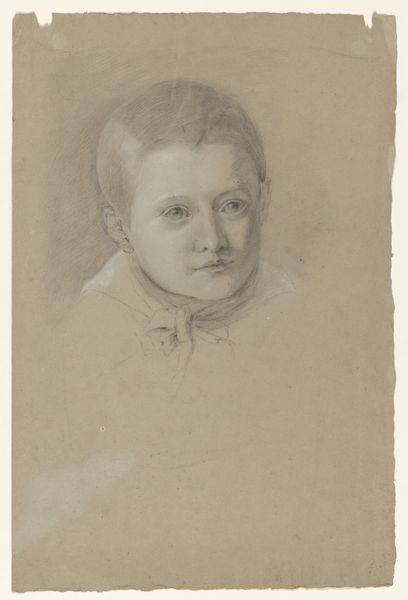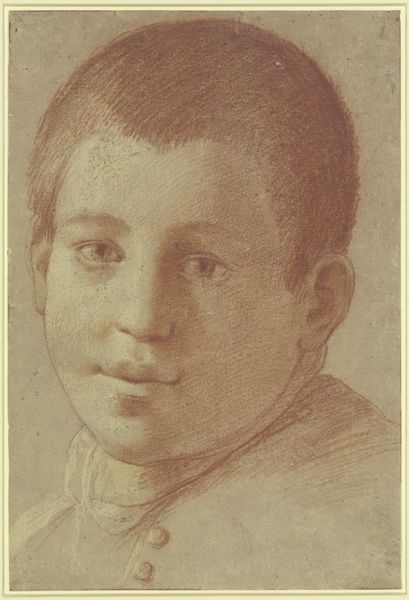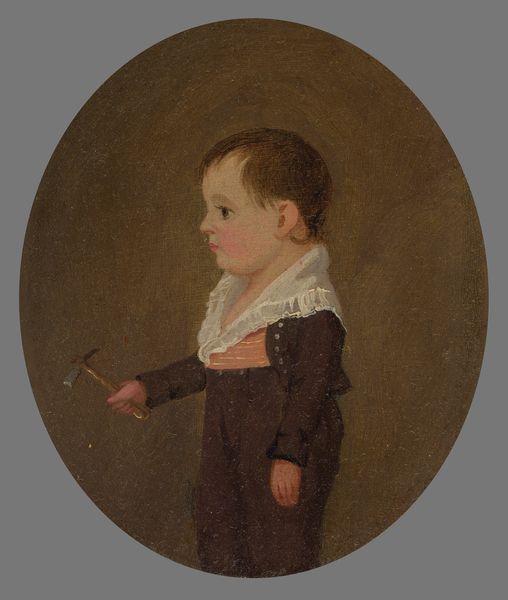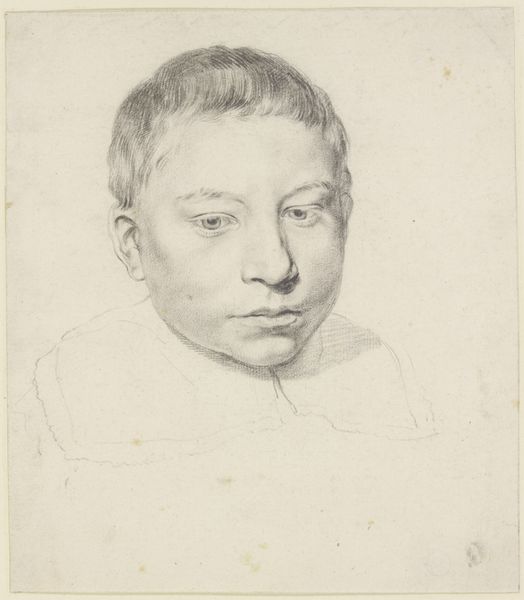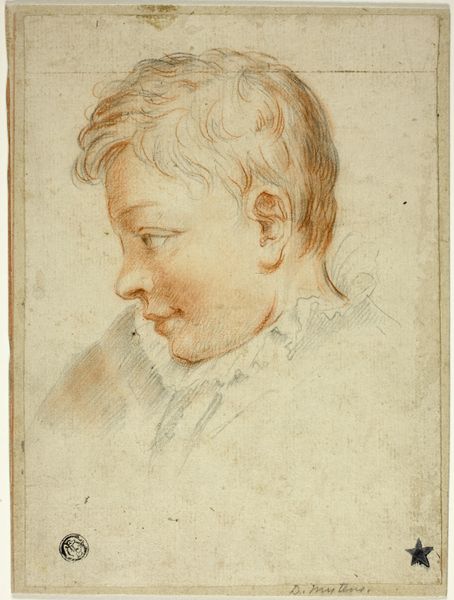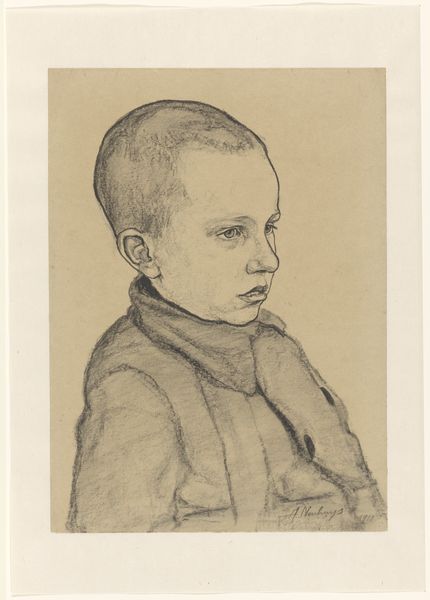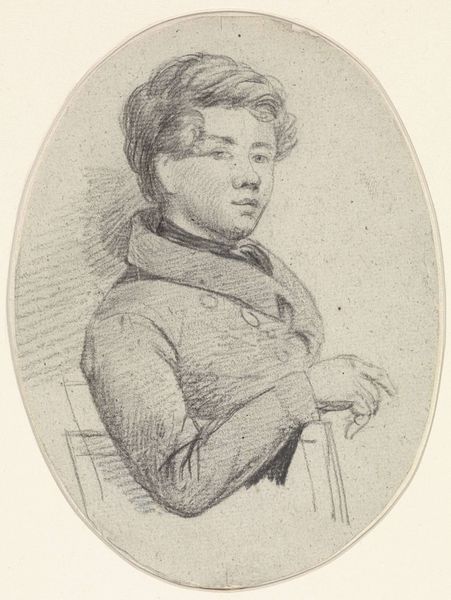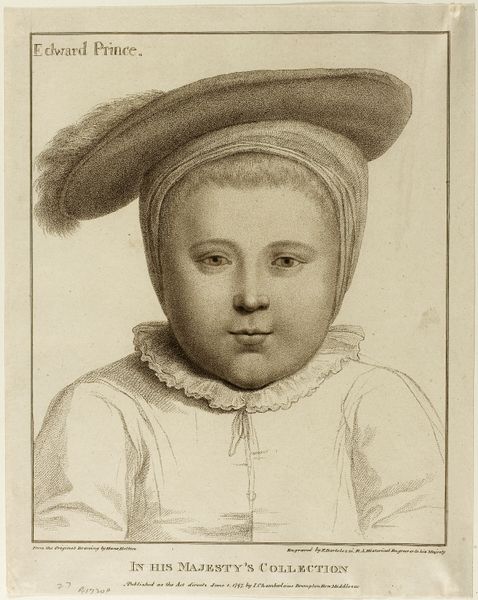
drawing, pencil
#
portrait
#
drawing
#
facial expression drawing
#
pencil sketch
#
portrait reference
#
pencil drawing
#
romanticism
#
pencil
#
animal drawing portrait
#
portrait drawing
#
facial portrait
#
portrait art
#
fine art portrait
#
digital portrait
Dimensions: height 189 mm, width 154 mm
Copyright: Rijks Museum: Open Domain
Gijsbertus Craeyvanger made this self-portrait drawing with colored chalks some time in the first half of the 19th century. Craeyvanger was Dutch, and the Netherlands in this period was experiencing rapid social and political change. This drawing presents us with an interesting set of questions about the role of portraiture in the 19th century. Portraits in the 1800s became increasingly associated with middle-class identity. Before this time portraits were more commonly associated with the aristocracy. The rise of the middle classes and the revolutions in art institutions such as the academy and the salon, meant that art became more closely connected with the social lives of ordinary people. Craeyvanger's self-portrait reflects this shift, presenting a bourgeois image of himself as a young man, but also subtly critiquing the grand style of aristocratic portraiture by using a more humble medium, colored chalks. Art historians can use a range of primary and secondary sources, such as letters, diaries, newspapers, and exhibition catalogues to understand better how the meaning of art is contingent on its social and institutional context.
Comments
No comments
Be the first to comment and join the conversation on the ultimate creative platform.
